Do you know that moment when you suddenly crave a certain food? Maybe it's something sweet, like chocolate. We all have cravings. And for most of us, it's probably sugar. Let's dive deeper into cravings, why they occur, what's happening in your body when you experience them, and how you can stop sugar cravings once and for all.
What exactly is cravings?
Cravings are an intense desire to eat a certain type of food. Often, this also feels very urgent, and you can hardly wait to finally get your hands on that one snack. These cravings can occur at any time, but you most often experience them in the late afternoon and evening. There is debate as to whether food cravings arise from not eating enough or whether they develop over time through the conditioning model of behavior. Both are possible. The conditioning model of cravings suggests that cravings arise when you regularly eat certain foods in combination with certain activities. For example, when you eat something while watching TV or feeling a certain way (e.g., lonely). Imagine you come home from a long day at work, eat dinner, and sit down in front of the TV. A craving for something sweet arises, and before you know it, you're heading to the fridge. Have you ever experienced this scenario?
Weight control and cravings
Cravings are powerful. What someone craves, and how often and how much they satisfy those cravings, can even affect weight. In fact, food cravings can influence up to 11% of changes in a person's eating behavior and weight gain.

Which foods do we crave the most?
It's normal for us humans to crave energy-dense foods like chocolate, pastries, or sugary drinks. It might not surprise you that most people crave chocolate and chocolate-containing foods. This is followed by other high-calorie sweets and savory treats. Many of us also tend to crave low-calorie fruits. Interestingly, cravings for high-calorie foods increase throughout the day, while cravings for fruit decrease.
The difference between hunger and cravings
Hunger and cravings can feel strikingly similar, and while there's definitely some overlap, they're also different. Here are four things to help you tell the difference between hunger and cravings:
- Feelings of hunger occur when the stomach is empty or at least not full.
- Hunger and cravings often occur at the same time, but you don't have to be hungry to experience cravings.
- Usually, cravings can only be satisfied by eating a specific food, while hunger is usually satisfied by eating any type of food.
- Cravings also differ from hunger in the longing for a particular food and the intensity of the desire.

Food cravings can have various causes
Our bodies are complex and multifaceted, and so are cravings. Cravings for food and sugar are triggered by many factors, including physical, emotional, and psychological. So how can you determine which factor is driving your craving? Good question!
Physical (bodily)
Physical cravings are linked to various processes that prepare the body for food and stimulate the urge to eat. These processes include increased saliva production in the mouth (sounds gross, but it's normal) and the activation of the brain's reward organ. There are some connections between nutrient deficiencies and cravings, but they only account for a small portion of cravings.
Emotionally
Emotional cravings can be triggered by feelings of nostalgia, the need for comfort, and other various emotions such as sadness. This can explain why, when you visit your grandmother, you get a craving for her delicious apple pie. Or, when you miss your childhood town, you get a sweet craving for a milkshake from the corner shop. (Or you could also say, "You get a craving for your favorite pastry from the local bakery" ).
Psychologically
There are several psychological reasons for the occurrence of food cravings. A common theory is based on Pavlovian conditioning. This involves repeatedly associating an activity or place with the consumption of food. Similar to an emotional craving, simply performing that activity or visiting that place can trigger a craving. For example, every time you go to the beach, you eat ice cream. Then, one day, when you visit the beach (without ice cream), you get a strong craving.
Take a moment to reflect and think about the frequent cravings you have. Can you tell whether they are physical, emotional, or psychological?

The connection between blood sugar and cravings
For us humans, taste is an important factor that determines our eating behavior. Most of us have a natural inclination towards sweet foods, as they are often more flavorful. Since our bodies strive for this optimal taste factor, this often leads to the consumption of foods high in sugar. Eating a lot of sugar causes a rise in blood sugar levels, which stimulates the release of insulin to transport blood sugar into the cells. Consequently, too much sugar in the body can lead to a rapid increase in insulin concentration, which results in rapid uptake of glucose from the blood into the cells. This, in turn, can lead to a rapid drop in blood sugar levels, which can trigger sugar cravings, and it starts all over again (like a roller coaster).
A drop in blood sugar levels can also occur if we haven't eaten enough. Since blood sugar is a source of energy for the body, this can lead to cravings. And these cravings are often directed towards carbohydrate- and sugar-rich foods.
How to avoid a glucose drop?
One way to prevent blood sugar drops is to monitor blood sugar levels using a continuous glucose monitor (CGM). A CGM monitors blood sugar levels and measures the body's individual responses to food, exercise, stress, and sleep. You can also avoid blood sugar drops by regularly eating high-protein, low-carbohydrate meals.
Why do women experience cravings more often during a certain phase of their cycle?
Many women experience cravings for sweets and certain foods depending on where they are in their menstrual cycle. A woman's ovarian hormones are particularly powerful, and they can influence hunger, cravings, and binge eating. This also depends on which phase of the cycle a woman is in (follicular or luteal). Let's take a closer look at why women experience cravings more frequently during certain phases of their cycle.

The follicular phase (days 1-14)
During the follicular phase, when estrogen levels are high, many women experience less hunger and cravings and lose weight (which is the opposite of the luteal phase). Estrogen is thought to regulate appetite, while progesterone counteracts the effects of estrogen. This may explain why sugar cravings are less intense during this phase.
Luteal phase (days 14-28)
During the luteal phase (postovulatory period), estrogen levels are low and progesterone levels are high. This can cause women to experience the following symptoms:
- Eating more than usual
- Increased cravings (especially for sweets)
- Increase in body weight
- Increased energy requirements (which may lead to increased physiological carbohydrate requirements).
- Reduced insulin sensitivity
During this luteal phase, lower estrogen levels lead to what most of us know as PMS (premenstrual syndrome). It's been shown that food cravings can be a reaction to the negative mood swings caused by PMS. Decreased serotonin levels during the premenstrual phase increase negative mood and cravings for serotonin-releasing foods like chocolate. It's possible that these hormonal changes are partly responsible for the increased food intake and cravings. So, it's quite possible that your hormones are affecting your sugar cravings. But there are ways to avoid these sugar cravings. You can find the right foods for each phase of your cycle and stop sugar cravings once and for all.

How food restrictions can lead to cravings
Food restriction and deprivation are common among women who, unfortunately, consider themselves overweight, regardless of their weight. For this reason, they often diet to reduce or control their weight. Anyone who restricts their food intake long-term can experience intense and frequent cravings. This can then lead to binge eating, overeating, and an unhealthy preoccupation with food.
Because of this focus on food and eating, and the heightened cravings, people on long-term diets are more likely to respond to external food stimuli than those who are not on a strict diet. They are also less responsive to the body's own signals of hunger and satiety. People who restrict their eating and experience chronic hunger may have elevated motilin levels, low insulin levels, and pancreatic polypeptide responses. This then leads to increased cravings for food and sugar. Therefore, the more you restrict food, the more intense the cravings become.
How can I avoid cravings?
Cravings are normal, but not necessary. Find out which foods keep you energized and full long after eating, and which foods make you feel hungry soon afterward. Your body is constantly trying to tell you what's good and what's bad for you. So why not listen to it?




